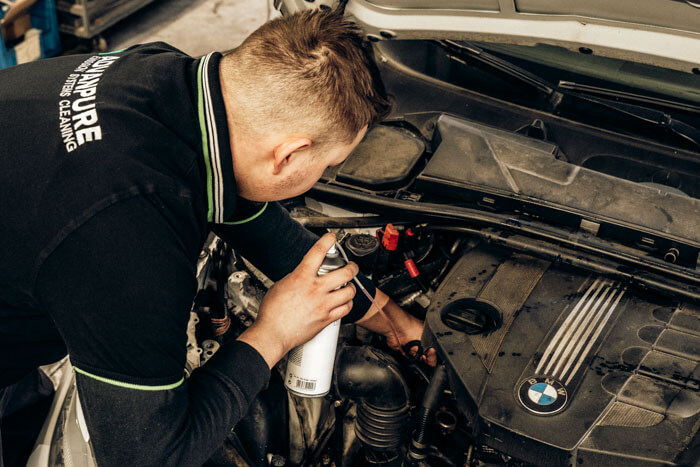7 Effective Tips to Clean Your DPFs Properly

A diesel particulate filter (DPF) is an essential component in modern diesel engines, designed to capture and store exhaust soot and reduce emissions of particulate matter. Understanding how a DPF works is crucial for maintaining your vehicle’s performance and compliance with environmental regulations. The Dpf Cleaning Uk plays a vital role in reducing the black smoke typically emitted by diesel engines and helps in achieving cleaner air standards. However, over time, the DPF becomes clogged with soot, which necessitates periodic cleaning to restore its functionality and efficiency.
Recognizing the Signs of a Clogged DPF
Identifying the early signs of a clogged DPF can save you from costly repairs and downtime. Some common symptoms include a noticeable decrease in engine performance, increased fuel consumption, the appearance of a dashboard warning light, and excessive exhaust smoke. If the DPF is not adequately maintained, it can lead to increased back pressure on the engine, which may cause further damage. Being vigilant about these signs and responding promptly can prolong the life of your DPF and enhance your vehicle’s overall health.
7 Effective Tips to Clean Your DPFs Properly
-
Choosing the Right Cleaning Method
Selecting an appropriate cleaning method for your DPF is critical to its longevity and functionality. There are several methods available, including manual, chemical, and thermal cleaning. Each method has its benefits and suitability, depending on the level of soot accumulation and the specific needs of your vehicle. For example, thermal cleaning is highly effective for heavily soiled filters, while manual cleaning may be suitable for less severe cases. It’s important to understand the pros and cons of each method to make an informed decision.
-
Manual Cleaning Steps
Manual cleaning of a DPF can be a practical choice for lightly or moderately clogged filters. This process typically involves removing the DPF from the vehicle and using compressed air to blow out the soot from the filter channels. Care must be taken not to damage the filter walls, which are quite delicate. After air cleaning, visually inspect the filter for any remaining debris or damage. Manual cleaning is generally less costly than other methods but may not be as thorough, making it ideal for regular maintenance rather than deep cleaning.
What Are the Top Features of the Latest Mazda Models?
-
Chemical Cleaning Solutions
Chemical cleaning involves using specific liquid solutions designed to break down the soot and ash accumulated inside the DPF. This method can be highly effective, particularly for filters that are not excessively blocked but have a significant build-up that air cleaning alone cannot remove. To perform chemical cleaning, the DPF is typically soaked in a chemical bath, and the solution helps dissolve the particulate matter. It is crucial to use chemicals that are specifically formulated for DPF cleaning to avoid damaging the filter material. After the chemical treatment, the DPF should be thoroughly rinsed and dried before reinstallation.
-
Professional DPF Cleaning Services
For vehicle owners who prefer not to handle DPF cleaning themselves or when the DPF requires a more thorough cleaning than can be achieved manually or chemically, professional DPF cleaning services are an excellent option. These services use advanced techniques such as ultrasonic or pneumatic cleaning that can restore the filter to near original condition. Professional cleaners also have the expertise to assess the filter’s condition and recommend whether cleaning or replacement is necessary, ensuring that the vehicle remains in optimal running condition without risking damage to the engine or exhaust system.
-
Regular Maintenance Schedule
Adhering to a regular maintenance schedule is crucial for prolonging the life of a DPF and ensuring it performs efficiently. Vehicle manufacturers often provide guidelines for how frequently a DPF should be cleaned, which can vary based on the engine type and vehicle usage. High mileage or vehicles operated in dusty conditions may require more frequent DPF cleaning. Regular maintenance not only helps in avoiding unexpected engine issues but also ensures compliance with emission standards, keeping the vehicle environmentally friendly.
-
Using DPF Cleaning Kits
For those looking for a convenient at-home cleaning solution, DPF cleaning kits are available that can be used without the need for full removal of the DPF from the vehicle. These kits often include sprays or foams that are injected into the DPF through the sensor ports, helping to break down the soot while the vehicle runs. This method is particularly useful for routine maintenance and can significantly extend the period between professional cleanings. However, it’s important to follow the instructions carefully and ensure that the product is compatible with your specific vehicle’s DPF.
-
The Role of DPF Regeneration
DPF regeneration is a critical process where the accumulated soot in the DPF cleaning is burnt off at high temperatures to clear the filter and restore its performance. There are two main types of regeneration: passive and active. Passive regeneration occurs naturally when the vehicle is driven at highway speeds, allowing the exhaust temperature to rise sufficiently to incinerate the soot. Active regeneration, on the other hand, involves the vehicle’s engine management system initiating a burn-off process, which can happen during normal driving or while the vehicle is parked. Understanding and ensuring proper regeneration cycles is essential to prevent DPF clogging and maintain vehicle efficiency.
Summary:
Driving habits significantly affect the health of a DPF. Frequent short trips where the engine does not reach optimal operating temperatures can prevent passive regeneration, leading to soot buildup. Conversely, regular driving at higher speeds, such as on highways, can help maintain the DPF’s efficiency by enabling natural regeneration processes. Vehicle owners are advised to periodically drive at sustained higher speeds to facilitate this process and prevent the need for more frequent, costly cleans or manual regeneration cycles.



